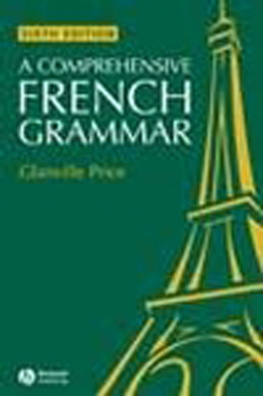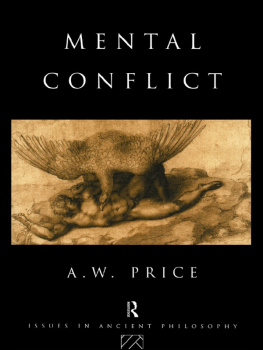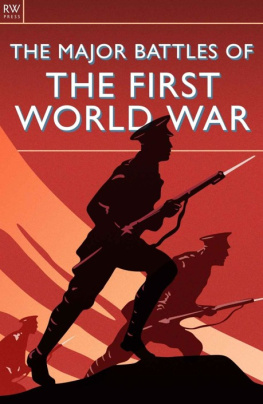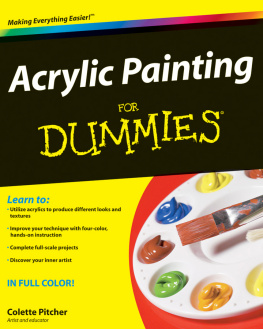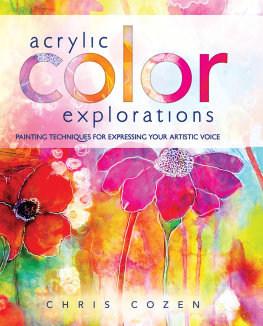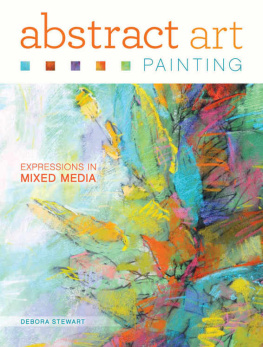Creative Freedom
52 art ideas, projects and exercises
to overcome your creativity block
Maggie Price
Cincinnati, Ohio
www.artistsnetwork.com
IL REFUGIO, Maggie Price
Pastel on Richeson Premium Pastel Surface
24 18 (61cm 46cm)
Landscapes are my primary subject. Until recently I rarely painted structures, still lifes or people. To break out of my landscape rut I have experimented with a variety of subjects, including interiors and still-life subjects. Exploring how outdoor light can illuminate an interior has expanded my understanding of the ways light describes forms, both indoors and out.
Introduction
Breaking Out of Your Block to Move Forward
When we talk about breaking your artists block, it can apply to far more than that stuck place when you dont quite know how to start. Ive been painting for most of my life, but like all other artists, I experience the classic block. Its a vague feeling of unease, a not-knowing how to start or what to paint. Its what drives us to find innumerable errands or tasks to keep us out of the studio and as far away from the easel as possible.
But there are other kinds of blocks as well. One kind is the same old, same old syndrome. I recognize it when my paintings all start to look alike. Im not talking about the artists stylethats something else entirelybut that feeling of repetition, of boring redundancy, that leaves me tired of every subject I look at and, once again, keeps me from painting.
A more subtle block is that of failure to progress. When Im producing acceptable paintings, but not what I consider to be great paintings, thats a progress block. It doesnt mean theres anything wrong with what Im doing, but the work Im producing is simply a matter of repeating previous successes and not advancing to a higher level.
Over the past few years, Ive experimented with various ways to break through these blocks. Ive tried new mediums, painted different subjects and developed exercises to help me move through the block. Ive also noticed other artists experimenting with different techniques to achieve that goal. Since it appears to be a fairly common problem, it seemed a good idea to pull a lot of these ideas together and share them.
This book covers techniques in a number of mediums. Some of the concepts are specific to the medium, but many can be adapted to work with other mediums as well. Here are a few things to keep in mind as you explore these ideas:
- Consider these as exercises and not necessarily steps to finished work. If you expect to produce a finished, perfect painting, you will worry too much about the outcome. Fear of failure creates another kind of block.
- Experiment with converting exercises shown here in one medium to another medium. See what happens if, for instance, you follow an exercise in watercolor but use pastel.
- Keep a sense of play. Have fun with the exercises and dont hesitate to head off in a different direction if you see possibilities outside the steps.
- Keep track of what works for you. If a particular exercise really motivates you, flag it to repeat again in the future.
One of the great things about being an artist is that theres always something new to learn and endless potential for growth. So when you find yourself facing any kind of block, try something new and break through it to move forward.
Tools & Materials
The creativity exercises within cover a variety of mediums, including pastel, oil, acrylic and mixed media. The materials are referenced within each demonstration as general guides for you to understand the artists specific processes. If a paint color or tool sounds unfamiliar to you and you would like to know more about it, a quick Google search will usually yield the tool, its brand and where you can purchase it.
When purchasing art supplies, a good rule of thumb is to buy the best supplies you can afford. Use what you like and are comfortable with, but always be willing to experiment with unfamiliar supplies to inspire new ideas and energize your work.
PASTEL AND PAINT COLORS
Most artists develop their own palettes over time. Youll find you gravitate naturally toward specific colors and may shy away from others. For example, some artists might find a way to use purple hues in nearly every painting, while others never touch the color unless the subject is purpleand even then, they might find a way to make it blue instead! Whatever your medium, try a variety of colors and brands, and determine over time what speaks to you.
PASTELS
There is a wide variety of soft pastels available, ranging from very soft to medium-soft to harder pastel sticks, though they all are referred to as soft pastels. Every time you prepare to make a mark on your surface, you must first select a pastel stick by considering its value, temperature and hue. Many artists like to have a value range of a specific hue in variations of texture, so they might, for example, have a range of blues in hard pastels, medium-hard and very soft. Pastels are generally applied beginning with darker values and working up to highlights, so the lightest highlight colors tend to be very soft pastels that will adhere easily to colors already layered onto the surface.
Pastel Supports
Pastel surfaces vary in the amount of tooth, or surface texture, that holds the pastel pigment. Some examples used in this book include various brands of sanded pastel papers, pastel boards and other prepared surfaces made specifically for pastel, and hot-pressed watercolor paper.
Other Tools for Pastel
- 2-inch (51mm) flat foam brush
- -inch (13mm) flat bristle brush
- paper towels
- vine charcoal for quick layout
- pastel ground
- acrylics for tinting ground
- spray fixative (some artists use it, some never do)
- pH-neutral black masking tape
- solvents for dissolving pastel for underpaintings, such as Turpenoid, water, rubbing alcohol or denatured alcohol
- clear gesso
- palette knives
- old watercolor brushes
OILS
Oil is the primary medium of the Old Masters, and often the medium of the classical painter. You may work with just a few tubes of paint, mixing your own colors, enjoying the harmony of color created by this limited-palette approach, or you may prefer using a wide variety of pre-mixed colors. Every artist will develop a preference as to type of brushes used, whether rounded, flat or the tapered filbert, and will select these shapes from a variety of hairs, from bristle to synthetic to sable. Palette knives are also a matter of personal choiceyoull find the shape that feels right to your hand. When you work in oils, youll notice they can take quite a long time to dry, and traditionally you will begin with thin layers of paint, working up to fat and heavier applications, which allows for even drying of the paint. You may also choose to use a drying agent or any of a number of mediums for thinning or thickening the paint. There are lots of possibilities to explore when you begin painting in oils.




